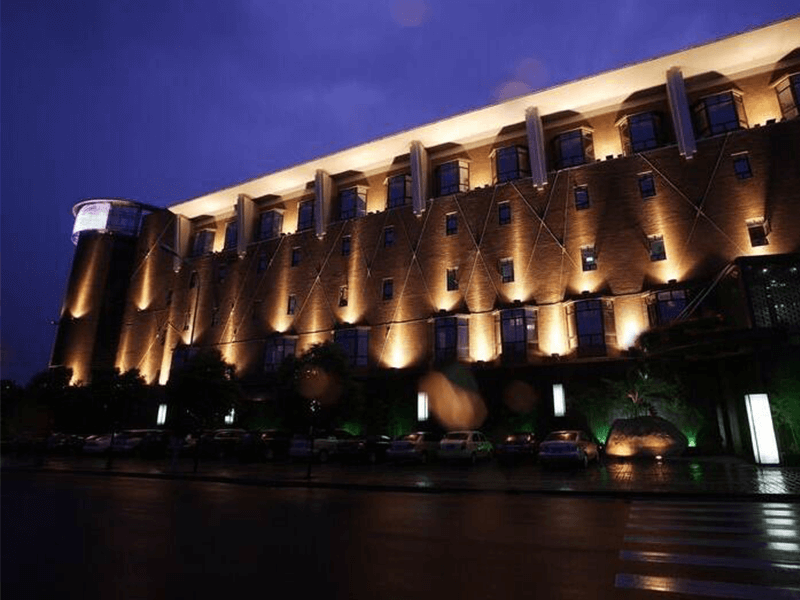Outdoor lighting is a versatile and transformative element of landscape and architectural design. Various types of outdoor lighting fixtures and techniques serve both functional and aesthetic purposes:
1. Path Lighting: Path lights are fixtures placed along walkways, driveways, or garden paths. They provide safe navigation, define pathways, and add a charming ambiance to outdoor spaces.
2. Floodlights: Floodlights emit a wide beam of high-intensity light. They find frequent use in bolstering security and providing illumination over expansive spaces, including but not limited to parking lots, sports fields, and architectural facades.
3. Spotlights: Spotlights produce a focused, directional beam of light. They accentuate specific features like trees, sculptures, or architectural details.
4. Wall Washing: Wall washing involves mounting fixtures to cast a uniform wash of light across vertical surfaces, such as walls or facades. It highlights textures and creates an inviting ambiance.
5. Wall Grazing: Wall grazing uses fixtures placed at oblique angles to cast light across textured surfaces. It adds depth, drama, and visual interest to walls, creating captivating plays of light and shadow.
6. Step Lighting: Step lights are installed in staircases, decks, or outdoor seating areas to enhance safety and aesthetics. They illuminate steps and prevent tripping hazards.
7. Deck and Patio Lighting: Deck and patio lights are integrated into outdoor seating and entertainment areas. They foster a cozy and welcoming ambiance, making them ideal for gatherings and social occasions.
8. Landscape Lighting: Landscape lighting fixtures are designed to highlight the beauty of gardens, plants, and natural elements. Techniques include uplighting, downlighting, and moonlighting.
9. String Lights: String lights, often used in outdoor dining and entertainment spaces, provide a whimsical and festive ambiance. They can be hung across patios, pergolas, or trees.
